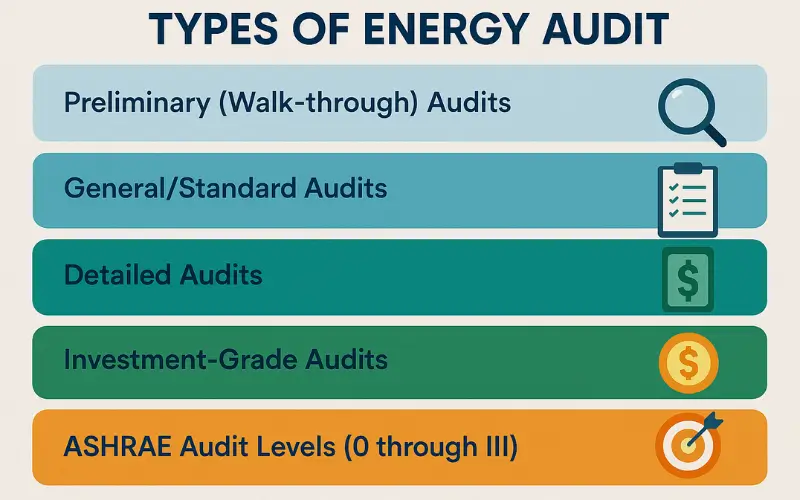In today’s industrial landscape, factories face increasing pressure to optimize energy consumption—not only to cut costs but also to meet stringent environmental regulations and support sustainability goals. This is where energy management software steps in as a powerful tool to help factories monitor, analyze, and control their energy usage in real time.
Energy management software is designed to collect data from various energy sources and factory equipment, providing actionable insights that enable better decision-making and efficient energy use. By implementing this technology, factories can identify waste, reduce utility bills, comply with regulations, and contribute to a greener future.
In this ultimate guide, we’ll take an in-depth look at energy management software tailored for factories. You’ll learn what it is, how it works, why it’s essential, what key features to look for, and how to choose the right solution for your operation. We’ll also cover implementation best practices, common challenges, real-world case studies, and future trends shaping this industry.
Whether you’re a factory manager, an energy engineer, or a sustainability officer, this guide will equip you with all the knowledge you need to leverage energy management software effectively and unlock significant savings and environmental benefits.
Understanding Energy Management Software
Energy management software (EMS) is a specialized digital tool designed to help factories monitor, analyze, and optimize their energy consumption. It acts as the brain behind energy-saving strategies, collecting data from various sources and turning it into actionable insights.
Definition and Core Functions
At its core, EMS performs several critical functions:
- Real-time Monitoring: Continuously tracks energy usage across machines, departments, or entire facilities, providing instant visibility into consumption patterns.
- Data Collection and Analysis: Gathers data from sensors, meters, and smart devices, then analyzes it to detect inefficiencies or unusual consumption spikes.
- Energy Reporting: Generates detailed reports that help stakeholders understand where and how energy is used, facilitating informed decisions.
- Automation and Control Capabilities: Some EMS platforms enable automatic adjustments to equipment or processes to optimize energy use without manual intervention.
Types of Energy Management Software
Factories can choose from several EMS types depending on their needs:
- Cloud-Based vs. On-Premise Solutions: Cloud-based EMS offers remote access, scalability, and lower upfront costs, while on-premise solutions provide more control and may suit facilities with strict data security policies.
- Integrated Systems vs. Standalone Tools: Integrated systems combine EMS with other factory management software (e.g., maintenance, production), whereas standalone tools focus solely on energy data.
- Specialized Software for Different Energy Types: Some EMS are tailored to manage specific energy sources such as electricity, gas, water, or compressed air, offering targeted analytics.
How Energy Management Software Works
The EMS workflow generally involves:
- Data Acquisition: Sensors and smart meters installed throughout the factory collect real-time data on energy consumption and equipment status.
- Data Processing and Visualization: The software processes raw data and presents it via intuitive dashboards, charts, and graphs for easy interpretation.
- Alerts and Notifications: Users receive alerts for abnormal usage patterns, equipment malfunctions, or when consumption exceeds set thresholds.
- Optimization Algorithms: Advanced EMS platforms use algorithms and machine learning to recommend or automatically implement energy-saving actions.
Why Factories Need Energy Management Software
In today’s competitive manufacturing environment, efficient energy use is no longer optional—it’s essential. Energy management software helps factories address critical challenges and unlock significant advantages:
Increasing Energy Efficiency
Factories consume vast amounts of energy daily, often without fully understanding where waste occurs. EMS helps by:
- Identifying Energy Waste: It pinpoints inefficient equipment, processes, or operational behaviors that lead to unnecessary energy use.
- Benchmarking Performance: Comparing energy consumption across departments, shifts, or facilities highlights areas for improvement and tracks progress over time.
Cost Savings
Energy expenses represent a substantial portion of operational costs in factories. EMS supports cost reduction by:
- Reducing Utility Bills: By optimizing energy usage and eliminating waste, factories can significantly lower monthly energy costs.
- Avoiding Peak Demand Charges: EMS can monitor and manage consumption during peak times, preventing costly demand surcharges imposed by utility providers.
Regulatory Compliance
Factories must comply with environmental regulations and standards related to energy consumption and emissions. EMS assists in:
- Meeting Environmental Standards: Automated data tracking simplifies adherence to energy efficiency and emission regulations.
- Reporting Requirements: EMS generates accurate, audit-ready reports required by regulatory bodies or corporate sustainability programs.
Supporting Sustainability Goals
As sustainability becomes a priority, factories use EMS to:
- Reduce Carbon Footprint: By optimizing energy use, factories minimize greenhouse gas emissions associated with their operations.
- Facilitate ESG Reporting: EMS provides reliable data to support Environmental, Social, and Governance (ESG) disclosures, enhancing corporate reputation and investor confidence.
Key Features to Look for in Energy Management Software for Factories
Choosing the right energy management software can be overwhelming, given the variety of options and features available. To ensure you select a solution that meets your factory’s unique needs, consider these essential features:
Real-Time Data Monitoring and Alerts
The ability to monitor energy usage in real time is crucial. Look for software that provides live dashboards and sends instant alerts when energy consumption exceeds predefined thresholds or when equipment malfunctions, enabling quick responses to issues.
Detailed Energy Usage Reports
Comprehensive reporting capabilities allow you to analyze historical energy data, identify trends, and generate customized reports. These reports are valuable for tracking performance, supporting audits, and informing management decisions.
Predictive Analytics and Forecasting
Advanced EMS platforms incorporate predictive analytics to forecast future energy consumption based on historical data and operational variables. This helps in planning, budgeting, and proactive energy management.
Integration with Factory Equipment and IoT Devices
Seamless integration with existing factory machinery, sensors, and IoT devices is vital for accurate data collection and control. Ensure the software supports a wide range of protocols and devices relevant to your operations.
User-Friendly Dashboards and Customization
Intuitive dashboards that can be customized to show relevant KPIs make it easier for different users—engineers, managers, or executives—to access the information they need without information overload.
Scalability and Multi-Site Management
For factories with multiple plants or large-scale operations, software that can scale and manage energy data across various locations from a centralized platform is beneficial.
Mobile Access and Cloud Support
Mobile apps and cloud-based access enable stakeholders to monitor and manage energy usage remotely, facilitating real-time decision-making even when off-site.
How to Choose the Right Energy Management Software
Selecting the ideal energy management software (EMS) for your factory involves careful consideration of several factors to ensure it aligns with your operational needs and goals.
Assess Your Factory’s Energy Needs
Begin by evaluating your current energy consumption patterns and challenges. Identify which areas consume the most energy, the types of energy used (electricity, gas, water), and specific goals such as reducing peak demand or improving sustainability reporting. This clarity helps narrow down software that fits your requirements.
Compatibility with Existing Systems
Check whether the EMS integrates smoothly with your existing infrastructure, including production equipment, sensors, IoT devices, and enterprise software like ERP or maintenance management systems. Compatibility reduces implementation complexity and improves data accuracy.
Vendor Reputation and Support Services
Research software vendors’ track records, customer reviews, and industry experience. Reliable vendors offer robust customer support, training resources, and regular updates to keep the software effective and secure.
Budget Considerations and ROI
Consider upfront costs, subscription fees, and any hidden expenses such as installation or customization. Evaluate the potential return on investment by estimating energy savings, operational efficiencies, and compliance benefits to ensure the software is cost-effective.
Trial and Demo Options
Whenever possible, request demos or trial versions to test the software’s usability, features, and integration capabilities in your factory environment. Hands-on experience is invaluable for making an informed decision.
Top Energy Management Software Solutions for Factories in 2025
The energy management software market offers a variety of options tailored to different factory sizes, industries, and budgets. Below are some of the leading solutions recognized for their features, reliability, and customer satisfaction:
Overview of Leading Vendors
- Schneider Electric EcoStruxure: A comprehensive platform providing real-time energy monitoring, predictive analytics, and integration with industrial IoT devices. Ideal for large-scale factories seeking advanced automation.
- Siemens EnergyIP: Focuses on scalable energy data management with strong analytics and reporting features, supporting regulatory compliance and sustainability goals.
- EnergyCAP: Popular for utility bill tracking and energy benchmarking, EnergyCAP offers customizable reports and dashboards suitable for mid-sized manufacturing plants.
- DEXMA Energy Intelligence Platform: Cloud-based solution emphasizing real-time monitoring, alerts, and energy savings recommendations, especially suited for factories with multiple sites.
- Enertiv: Uses IoT sensors and AI-driven analytics to optimize energy consumption and equipment maintenance, with mobile app support for remote monitoring.
Comparison Table of Top Software
| Software | Key Features | Pricing Model | Best For | Cloud-Based | Mobile Access |
| Schneider Electric | IoT integration, automation | Custom pricing | Large enterprises | Yes | Yes |
| Siemens EnergyIP | Scalable, regulatory compliance | Custom pricing | Multisite operations | Yes/On-prem | Yes |
| EnergyCAP | Utility bill tracking, reports | Subscription-based | Mid-sized factories | Yes | Limited |
| DEXMA | Alerts, savings recommendations | Subscription-based | Multi-site factories | Yes | Yes |
| Enertiv | AI analytics, predictive maintenance | Custom pricing | Factories needing predictive maintenance | Yes | Yes |
Implementation Best Practices for Factories
Successfully deploying energy management software (EMS) in a factory requires careful planning and execution to maximize benefits and avoid common pitfalls.
Planning and Preparation
- Stakeholder Involvement: Engage key personnel early, including operations managers, maintenance teams, and IT staff. Their input ensures the software addresses real needs and fosters buy-in.
- Data Infrastructure Setup: Assess and upgrade if necessary your factory’s metering and sensor systems to ensure accurate and comprehensive data collection.
Installation and Configuration
Work closely with the vendor or implementation team to install hardware (if any), integrate the software with existing systems, and configure settings such as alert thresholds, reporting schedules, and user permissions tailored to your factory’s needs.
Training Staff
Provide thorough training sessions for all users to familiarize them with the software interface, features, and interpretation of data. Well-trained staff are more likely to use the system effectively and drive energy-saving initiatives.
Ongoing Monitoring and Maintenance
Regularly review energy data and software performance. Update configurations as operational needs change, and maintain hardware to ensure continuous, reliable data flow. Establish a feedback loop for users to report issues or suggest improvements.
Challenges and Common Pitfalls in Energy Management Software Adoption
While energy management software offers significant benefits, factories may face hurdles during adoption. Awareness of these challenges can help in proactive mitigation:
Data Accuracy Issues
Incorrect or incomplete data from faulty sensors or poor installation can lead to misleading insights. Regular calibration and validation of data sources are essential to maintain accuracy.
Integration Difficulties
Compatibility problems with existing factory systems or outdated equipment may complicate integration, leading to delays or increased costs.
User Resistance and Training Gaps
Employees may resist adopting new technology due to unfamiliarity or perceived complexity. Insufficient training can reduce user engagement and limit the software’s effectiveness.
Hidden Costs
Unexpected expenses related to customization, hardware upgrades, or ongoing maintenance can strain budgets. A thorough cost-benefit analysis and clear vendor agreements help manage financial risks.
Case Studies: How Factories Have Benefited from Energy Management Software
Real-world examples illustrate the transformative impact of energy management software (EMS) in industrial settings. Below are three case studies demonstrating measurable benefits.
Case Study 1: Large Automotive Manufacturer
A global automotive factory implemented Schneider Electric’s EcoStruxure platform to monitor energy consumption across multiple production lines. By analyzing real-time data, the facility identified idle equipment consuming energy during non-production hours. Implementing automated shut-offs and scheduling adjustments led to a 15% reduction in electricity usage within the first year, saving millions in utility costs and significantly lowering carbon emissions.
Case Study 2: Food Processing Plant
A mid-sized food processing factory adopted DEXMA’s cloud-based EMS to better manage peak demand charges. The software’s predictive analytics allowed the plant to shift energy-intensive processes to off-peak times. This strategy reduced peak demand fees by 20% and improved overall operational efficiency without impacting production schedules.
Case Study 3: Textile Factory
A textile manufacturing facility faced challenges integrating its legacy equipment with modern EMS. After partnering with Enertiv, the factory installed IoT sensors and used AI-driven analytics to predict equipment maintenance needs alongside energy optimization. This approach minimized unexpected downtimes and cut energy waste by 12%, improving both productivity and sustainability.
Future Trends in Energy Management Software for Factories
As technology evolves, energy management software (EMS) continues to advance, offering factories new tools and capabilities to enhance energy efficiency and operational excellence.
AI and Machine Learning Integration
Artificial intelligence (AI) and machine learning are increasingly embedded in EMS platforms to provide smarter analytics, predictive insights, and automated decision-making. These technologies enable systems to learn from historical data, detect anomalies faster, and recommend optimal energy-saving actions.
Enhanced IoT Connectivity
The expansion of the Internet of Things (IoT) brings more connected devices and sensors into factory environments. This increased connectivity allows for more granular data collection and precise energy monitoring across all aspects of manufacturing operations.
Blockchain for Energy Transactions
Blockchain technology is emerging as a secure way to track and verify energy usage and transactions, particularly relevant for factories participating in decentralized energy markets or renewable energy trading schemes.
Advanced Predictive Maintenance
Combining energy data with equipment health metrics enables advanced predictive maintenance strategies. EMS can forecast when machines need servicing before failures occur, reducing downtime and improving energy efficiency.
Conclusion
Energy management software is a powerful ally for factories striving to improve efficiency, reduce costs, and meet growing sustainability demands. By providing real-time insights, automation capabilities, and advanced analytics, EMS empowers factories to identify energy waste, optimize operations, and achieve measurable savings.
Choosing the right software involves understanding your factory’s unique needs, evaluating key features, and partnering with reputable vendors. Successful implementation hinges on thorough planning, staff training, and ongoing monitoring to fully unlock the benefits.
As technology advances, future innovations like AI integration and enhanced IoT connectivity will continue to elevate the potential of energy management software, making it an indispensable tool for factories worldwide.
If your factory hasn’t yet embraced EMS, now is the perfect time to explore solutions that can drive both financial and environmental gains — transforming energy management from a challenge into a competitive advantage.
Frequently Asked Questions (FAQs)
1. What is the difference between energy management software and energy monitoring?
Energy monitoring refers to tracking energy usage data, often in real time, while energy management software goes further by analyzing that data, providing insights, alerts, and sometimes automating controls to optimize energy consumption.
2. Can energy management software integrate with existing factory systems?
Yes, most modern EMS platforms support integration with a wide range of factory equipment, sensors, and software systems, enabling seamless data collection and control.
3. How much does energy management software typically cost?
Costs vary widely depending on features, scale, and vendor pricing models. Some offer subscription-based pricing, while others have custom quotes. Consider total cost of ownership including installation and maintenance.
4. Is energy management software suitable for small factories?
Absolutely. There are scalable EMS solutions designed to fit small to mid-sized factories, offering relevant features without unnecessary complexity.
5. How quickly can factories see ROI after implementation?
Return on investment depends on the factory’s size, energy usage patterns, and software effectiveness but typically ranges from several months to two years.
6. What are the data security concerns with cloud-based energy management software?
Cloud-based EMS providers employ strong encryption and security protocols, but factories should ensure vendors comply with industry standards and conduct regular security audits to protect sensitive data.




